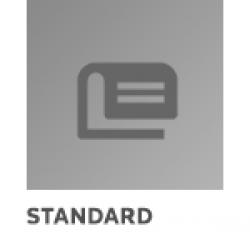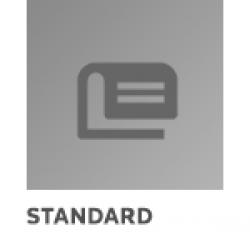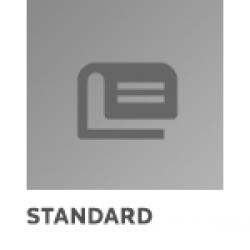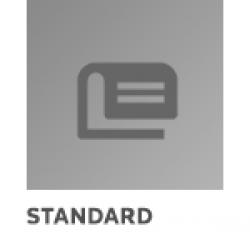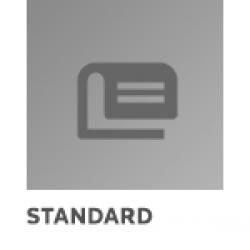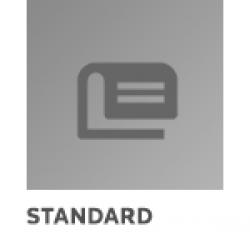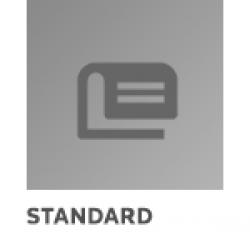Cart
10
10
item(s)
-
$549.60
-
 1xAASHTO T 119M/T 119-18
$24.30
1xAASHTO T 119M/T 119-18
$24.30 -
 1xISO 29585:2023
$94.50
1xISO 29585:2023
$94.50 -
 1xULC 702.2
$0.00
1xULC 702.2
$0.00 -
 1xUL 60335-2-24
$85.05
1xUL 60335-2-24
$85.05 -
 1xRTCA DO-338
$117.00
1xRTCA DO-338
$117.00 -
 1xUL Subject 1062
$74.85
1xUL Subject 1062
$74.85 -
 1xULC 518.1
$99.90
1xULC 518.1
$99.90 -
 1xULC Subject 701
$0.00
1xULC Subject 701
$0.00 -
 1xULC Subject 531
$0.00
1xULC Subject 531
$0.00 -
 1xAS 4087:2011 Amd 2:2023
$54.00
1xAS 4087:2011 Amd 2:2023
$54.00
No products
To be determined
Shipping
$549.60
Total
Quantity
Total
Product successfully added to your shopping cart
There are 10 items in your cart.
There are 10 items in your cart.
Total
$549.60
UL 62368-1
UL 62368-1 Audio/video, information and communication technology equipment - Part 1: Safety requirements
standard by Underwriters Laboratories, 12/13/2019
Reduced price!
M00001407
New product
Full Description
Audio/video, information and communication technology equipment - Part 1: Safety requirementsUL 62368-1
1 Scope
This part of IEC 62368 is applicable to the safety of electrical and electronic equipment within the field of audio, video, information and communication technology, and business and office machines with a rated voltage not exceeding 600 V. This standard does not include requirements for performance or functional characteristics of equipment.
NOTE 1 Examples of equipment within the scope of this standard are given in Annex a.
NOTE 2 A RATED VOLTAGE of 600 V is considered to include equipment rated 400/690 V.
This part of IEC 62368 is also applicable to: - components and subassemblies intended for incorporation in this equipment. Such components and subassemblies need not comply with every requirement of the standard, provided that the complete equipment, incorporating such components and subassemblies, does comply; - external power supply units intended to supply other equipment within the scope of this part of IEC 62368; - accessories intended to be used with equipment within the scope of this part of IEC 62368.
This part of IEC 62368 does not apply to power supply systems which are not an integral part of the equipment, such as motor-generator sets, battery backup systems and distribution transformers.
This part of IEC 62328 specifies safeguards for ordinary persons, instructed persons, and skilled persons. Additional requirements may apply for equipment that is clearly designed or intended for use by children or specifically attractive to children.
NOTE 3 In Australia, the work conducted by an INSTRUCTED PERSON or a SKILLED PERSON may require formal licensing from regulatory authorities.
This standard assumes an altitude of 2 000 m unless specified otherwise by the manufacturer.
This part of IEC 62368 does not apply to equipment to be used in wet areas. Additional requirements may apply.
Additional requirements for equipment intended for outdoor installation are given in IEC 60950-22.
This part of IEC 62368 does not address: - manufacturing processes except safety testing; - injurious effects of gases released by thermal decomposition or combustion; - disposal processes; - effects of transport (other than as specified in this standard); - effects of storage of materials, components, or the equipment itself; - the likelihood of injury from particulate radiation such as alpha particles and beta particles; - the likelihood of thermal injury due to radiated or convected thermal energy; - the likelihood of injury due to flammable liquids; - the use of the equipment in oxygen-enriched or explosive atmospheres; - exposure to chemicals other than as specified in Clause 7; - electrostatic discharge events; - environmental aspects; - requirements for functional safety.
NOTE 4 For specific functional and software safety requirements of electronic safety-related systems (for example, protective electronic circuits), see IEC 61508-1.
1DV.1 Modify Clause 1 by adding the following text after the third paragraph:Battery backup systems that are not an integral part of stationary equipment, such as provided in separate cabinets, are subject to the appropriate standard for battery backup systems, such as UL 1973, Batteries for Use in Light Electric Rail (LER) Applications and Stationary Applications.
NOTE See Figures 1.1 and 1.2 of UL 1973 for more information on independent electric energy storage systems (EESS) covered by UL 1973, which can consist of both low voltage (class ES or ES2) and high voltage (class ES3) subsystems, battery management, thermal management, and related features and safeguards. When interconnected with AV, IT, and CT Equipment, and typically used in conjunction with an uninterruptible power supply (UPS), such EESS typically serve as a short-term substitution of the mains supply during power outages and similar disturbances.1DV.2 Modify Clause 1 by replacing the seventh paragraph with the following:Additional requirements for information and communication technology equipment intended for outdoor installation are given in CSA/UL 60950-22. Additional requirements for audio/video equipment intended for outdoor installation are given in the relevant requirements in CAN/CSA C22.2 No. 60065 or UL 60065.1DV.3 Modify Clause 1 by adding the following text:1DV.3.1 This standard also is applicable to equipment designed to be installed in accordance with the Canadian Electrical Code, Part I, CSA C22.1-12; Canadian Electrical Code, (CEC) Part II, General Requirements, CAN/CSA C22.2 No. 0-10; the National Electrical Code, NFPA 70-2014; and the National Electrical Safety Code, IEEE C2-2012.1DV.3.2 The standard is also applicable to equipment, when identified by a marking or instruction [see Annex dvk (Annex DVA, Clause 1 entry)], designed to be installed in accordance with Article 645 of the National Electrical Code, NFPA 70-2014 and the Standard for the Protection of Information Technology Equipment, NFPA 75-2013.1DV.3.3 See Annex dva for requirements and references to regulatory requirements that apply to this equipment, as applicable.1DV.4 Modify Clause 1 by adding the following text:1DV.4.1 This standard includes additional requirements for equipment used for entertainment purposes intended for installation in general patient care areas of health care facilities. See Annex dvb.1DV.4.2 This standard includes additional requirements for equipment intended for mounting under kitchen cabinets. See Annex dvc.1DV.4.3 This standard does not apply to equipment having Remote Feeding Telecommunication (RFT) circuits. Equipment having RFT circuits is covered by CSA/UL 60950-21.1DV.4.4 Additional requirements may apply to large data storage equipment. Refer to CSA/UL 60950-23.1DV.4.5 This standard does not cover Modular Data Centers (MDCs), only the information and communication technology equipment contained within.NOTE: In the U.S., Modular Data Centers are covered by UL 2755, Modular Data Centers.1DV.5 Modify Clause 1 by adding the following text:1DV.5.1 Power Distribution Equipment and Sub-Assemblies1DV.5.1.1 This standard also is applicable to power distribution subassemblies connected to a mains used to distribute power entirely within a system of equipment also covered by this standard, such as power distribution units (PDUs) in the form of cord-connected power strips and shelves with multiple power outlets (receptacles) and intended to be installed in system racks, cabinets, home entertainment centers, etc.1DV.5.1.2 For equipment covered by this standard that incorporates components and sub-assemblies that perform a power distribution and control function covered by other standards, such as panelboards, load transfer equipment, or uninterruptible power systems utilized in power conditioners and computer power centers, this standard only may be used for investigation of safety for those aspects not covered by the other standards.1DV.5.1.3 This standard also does not apply to stand-alone equipment used for distribution of mains power that is covered by individual power distribution equipment standards.1DV.5.1.4 Based on the specific function, the following requirements are applicable to the stand-alone distribution equipment, or apply additionally to power distribution sub-assemblies and components of equipment covered by this standard, as described in 1dv.5.1.2 and 1dv.5.1.3: For Industrial Control Equipment, see CSA C22.2 No. 14 and UL 508. For Panelboards, see CSA C22.2 No. 29 and UL 67. For Switchboards, see CSA C22.2 No 244 and UL 891. For Transfer Switch Equipment, see CSA C22.2 No 178.1 and UL 1008. For Uninterruptible Power Systems, see CSA C22.2 No. 107.3 and UL 1778. For Power Distribution Centers for Communications Equipment, see UL 1801. For other forms of power distribution units for general applications, such as, Relocatable Power Taps, see CSA C22.2 No. 21, Cord Sets and Power Supply Cords, and UL 1363, Relocatable Power Taps. Cord connected Surge Protective Devices, see CSA Technical Information Letter No. A-24, Interim Certification Requirements for AC Line Connected Wiring Devices with Varistors, and UL 1449, Surge Protective Devices. Furniture Power Distribution Units, see CSA C22.2 No. 21, Cord Sets and Power Supply Cords, and UL 962A, Furniture Power Distribution Units.NOTE 1 It is assumed that power distribution equipment covered by the scope of this Standard is interconnected to the "Outlet" of a "Branch Circuit" as defined in Section 0 of the CEC, Part I, and Article 100 of the NEC. In the case of cord-connected equipment, the Outlet is the Receptacle associated with the building wiring. In the case of permanently connected equipment, the Outlet is the interface between the Branch Circuit conductors associated with the building wiring and the input terminals, pressure connectors, or leads associated with the power distribution equipment covered in whole or part by this standard.
NOTE 2 The following are common definitions of the hardware with related functions that require additional investigation to the appropriate Canadian and U.S. standards.Industrial Control Panel - An assembly of two or more components consisting of one of the following: (1) Power circuit components only, such as motor controllers, overload relays, fused disconnect switches, and circuit breakers; (2) Control circuit components only, such as pushbuttons, pilot lights, selector switches, timers, switches, control relays; or (3) A combination of power and control circuit components.These components, with associated wiring and terminals, are mounted on or contained within an enclosure or mounted on a subpanel. The industrial control panel does not include the controlled equipment.Panelboard - A single panel or group of panel units designed for assembly in the form of a single panel, including buses and automatic overcurrent devices, and equipped with or without switches for the control of light, heat, or power circuits; designed to be placed in a cabinet or cutout box placed in or against a wall, partition, or other support; and accessible only from the front.Switchboard - A large single panel, frame, or assembly of panels on which are mounted, on the face, back, or both, switches, overcurrent and other protective devices, buses, and usually instruments. Switchboards are generally accessible from the rear as well as from the front and are not intended to be installed in cabinets.Transfer Switch - An automatic or nonautomatic device for transferring one or more load conductor connections from one power source to another.Uninterruptible Power Supply - A power supply used to provide alternating current power to a load for some period of time in the event of a power failure.





